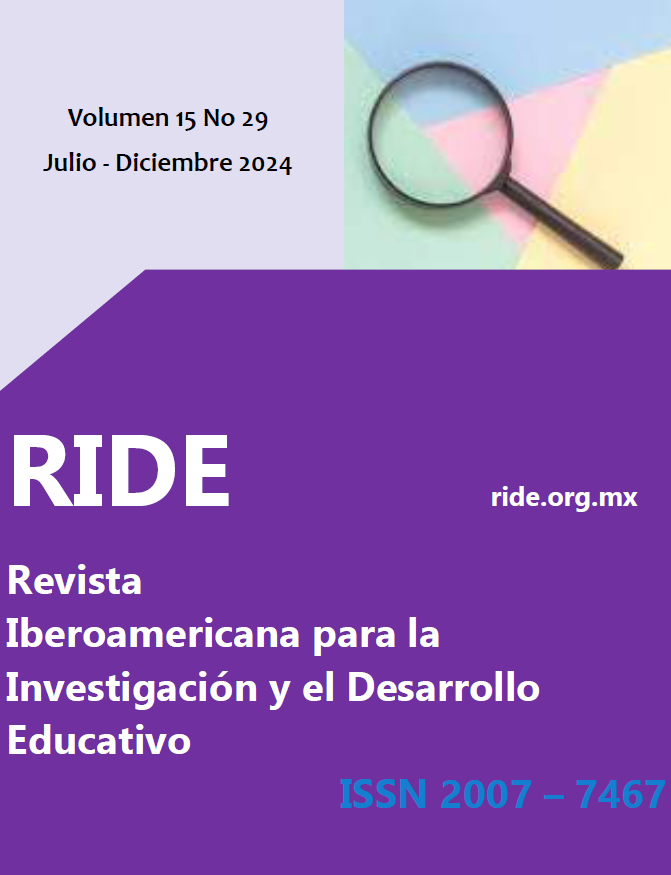Emotions present in the classroom of first semester students taking the programming learning unit at UPIBI-IPN
Abstract
Education today is evolving rapidly derived from various causes such as the confinement by COVID-19, national political changes, among others, this means that a diversity of emotions is presented within the classroom, so it is important to identify the emotions that are generated inside the classroom and how these influence the teaching and learning process of the student at a higher level. This research work aims to analyze the emotions present in the teacher and how they influence the teaching-learning process. To achieve the stated objective, the investigation was approached with the analysis of six basic emotions: anger, sadness, joy, fear, surprise, aversion, making a quantitative and continuous dependent variable measurement from the application of a questionnaire composed of 16 items to 146 fourth semester students of the Biotechnology Interdisciplinary Professional Unit. The results obtained show different emotional states present in the teacher, there being an influence that affects the teaching-learning process of the students derived from the activation of a chain of events present in the students and in the classroom environment, resulting in alert states. anxiety and disorganization manifesting in poor academic performance, this opens lines of research in which the student's working conditions can be modified as well as suggesting a series of emotional management courses for teachers in order to lead to harmonious learning environments.
Downloads
References
Arias, R. N. (1999). Las emociones en el cuerpo. Editorial Pax México.
Barragán Estrada, A. y Morales Martínez, C. I. (2014). Psicología de las emociones positivas: generalidades y beneficios. Enseñanza e Investigación en Psicología, 19(1), 103-118.
Bericat Alastuey, E. (2012). Emociones. Sociopedia.isa, 1-13.
Bohórquez Guamán, V., Vargas León, M. y Cedillo Zuriaga, M. (2023). La comunicación asertiva en el área institucional. Sinergia Académica, 6(2), 45-70.
Castillo, L. A. O. (2021). Competencia emocional y aprendizaje virtual. Revista Reforma Siglo XXI, 28(108), 46-51.
Cerdá Suárez, L. M. (2014). Gestión de las emociones en el aula: una experiencia internacional sobre el liderazgo y el desempeño docente. Innovación Educativa, 11(2).
Chóliz Montañés, M. (2005). Psicología de la emoción: el proceso emocional. Universidad de Valencia.
Fortoul, M. B. (2008). La concepción de la enseñanza según los estudiantes del último año de la licenciatura en Educación Primaria en México. Perfiles Educativos, 30(119), 72-89.
Gargurevich, R. (2008). La autorregulación de la emoción y el rendimiento académico en el aula: el rol del docente. Revista Digital de Investigación en Docencia Universitaria, 4(1), 1-13.
Henao Arias, J. F. y Marín Rodríguez, A. E. (2016). La ira, la alegría y la tristeza de los profesores (tesis de maestría). Universidad Católica de Manizales.
Ibáñez, N. (2002). Las emociones en el aula. Estudios Pedagógicos, (28), 31-45.
Muñoz de Morales, M. M. y Bisquerra Alzina, R. (2006). Evaluación de un programa de educación emocional para la prevención del estrés psicosocial en el contexto del aula. Ansiedad y Estrés, 12(2/3).
Lapponi, S. F. (2016). Las emociones en el profesorado: el afecto y el enfado como recursos para el disciplinamiento. Educação e Pesquisa, 43, 785-798.
Navarro, B. (2017). Reseña de “Educar las emociones” de Mireya Vivas, Domingo Gallego y Belkis González. REDIE. Revista Electrónica de Investigación Educativa, 9(2), 0.
Prieto Jiménez, E. (2008). El papel del profesorado en la actualidad. Su función docente y social. Foro de Educación, (10), 325-345.
Sala Roca, J., Albarca Castillo, M. y Marzo, L. (2002). La educación emocional y la interacción profesor/a-alumno/a. Revista Electrónica Interuniversitaria de Formación del Profesorado, 5(3), 1.
Smith, M. (2019). Las emociones de los estudiantes y su impacto en el aprendizaje: Aulas emocionalmente positivas. Narcea Ediciones.
Soto, E. y Bertoglio, O. J. (2001). Comportamiento organizacional: impacto de las emociones. International Thomson.
Trujillo González, E.,Ceballos Vacas, E. M., Trujillo González, M. D. y Moral Lorenzo, C. (2020). El papel de las emociones en el aula de educación infantil. Profesorado, Revista de Currículum y Formación del Profesorado, 24(1), 226-244.
Vecina Jiménez, M. L. (2006). Emociones positivas. Papeles del Psicólogo, 27(1), 9-17.
Von Hildebrand, D. (2004). La importancia del respeto en la educación. Educación y Educadores, (7), 221-228.

This work is licensed under a Creative Commons Attribution 4.0 International License.
In order to promote the development and dissemination of research in education in Latin America, the Ibero-American Journal for Educational Research and Development (RIDE) adhered to the Budapest Open Access Initiative, which is why it is identified as a Open access publication. This means that any user can read the complete text of the articles, print them, download them, copy them, link them, distribute them and use the contents for other purposes. Creative Cummons licenses allow users to specify the rights to use an open access journal available on the Internet in such a way that users know the rules of publication. Authors who publish in this journal accept the following conditions: Authors they keep the author's rights and give the magazine the right of the first publication, with the work registered with the attribution license of Creative Commons, which allows third parties to use the published material whenever they mention the authorship of the work and the first publication in this The authors can make other independent and additional contractual agreements for the non-exclusive distribution of the version of the article published in this journal (eg, include it in an institutional repository or publish it in a book) as long as they clearly indicate that The work was published for the first time in this magazine. Authors are allowed and recommended to publish their work. low on the Internet (for example on institutional or personal pages) before and during the review and publication process, as it can lead to productive exchanges and to a greater and faster dissemination of the published work















